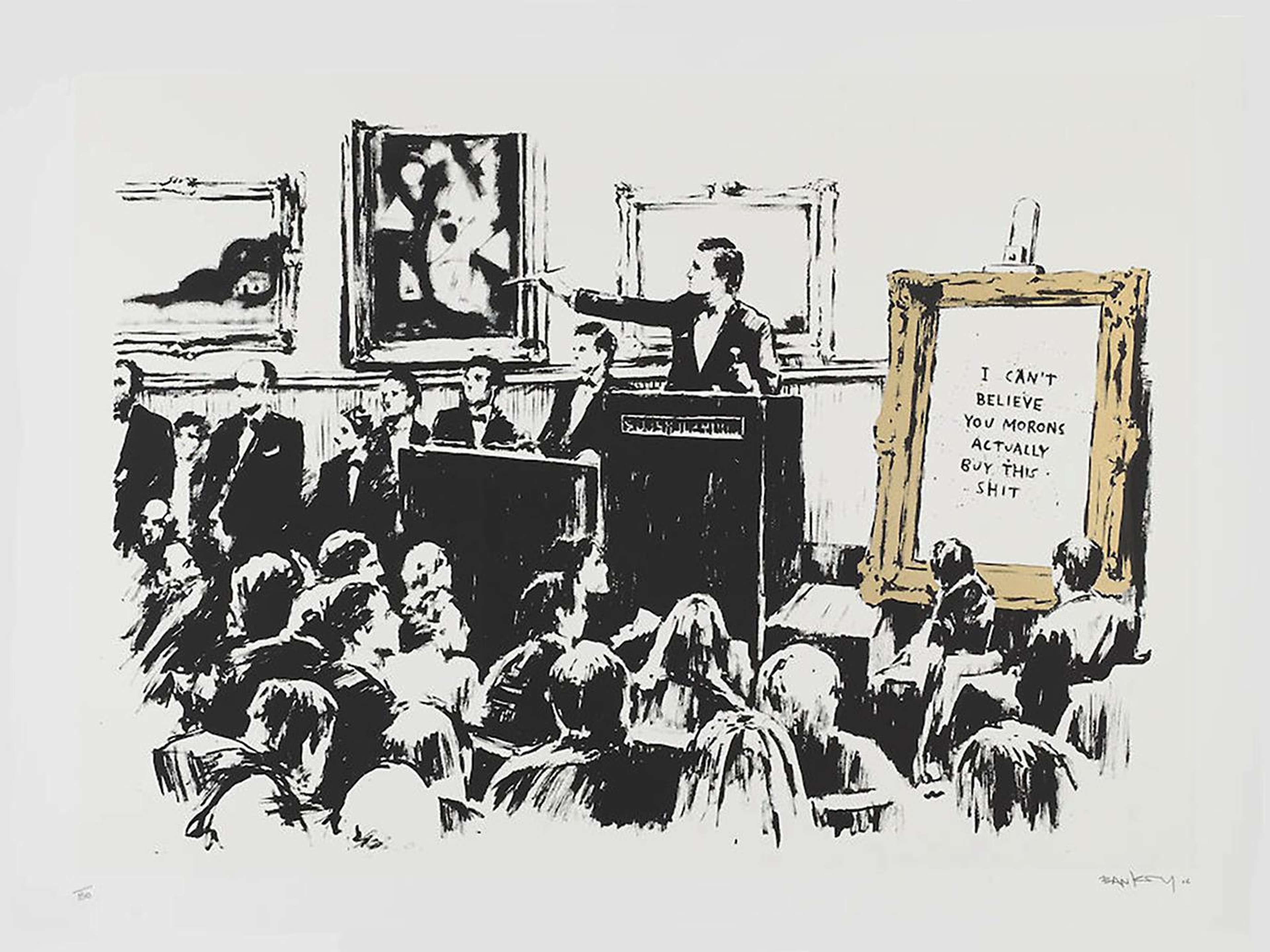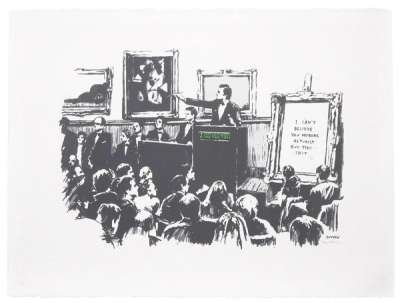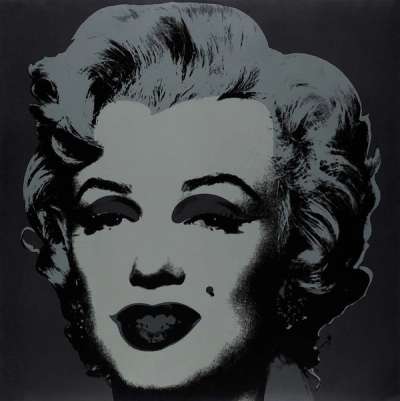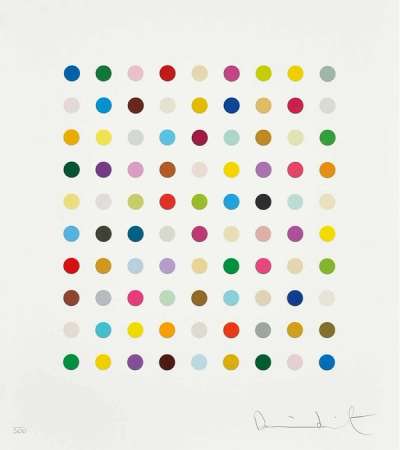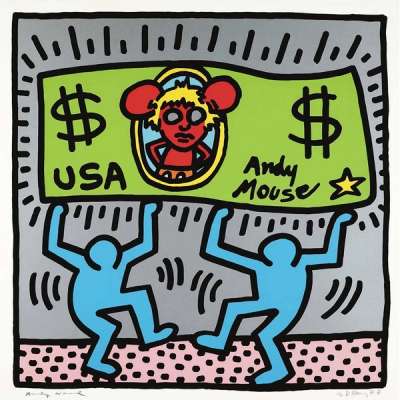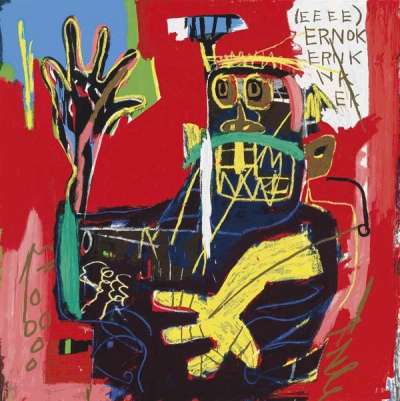Narcissism and Collecting

 Image © PA Images / Donald Trump standing at his Mar-A-Lago residence in 1993
Image © PA Images / Donald Trump standing at his Mar-A-Lago residence in 1993MyPortfolio
In the world of luxury collectibles, one cannot ignore the influence of ego and narcissism on the choices and motivations driving collectors to amass extraordinary and opulent portfolios. Understanding the role of ego in the acquisition of high-end collectibles is crucial as it provides valuable insights into market dynamics, including the driving forces behind the ever-increasing demand for, and value of, these items. It also offers a unique perspective on the psychological aspects that underpin the desires and motivations of collectors.
Narcissism is a personality trait characterised by an inflated sense of self-importance and a deep need for admiration that has often been linked to the pursuit of status symbols and material possessions. The world of luxury collectibles, with its allure of exclusivity and prestige, presents a perfect platform for narcissistic individuals to showcase their wealth and social standing.
Narcissism and Consumerism: The Hungry Pursuit of Luxury and Prestige
Narcissism has long been a subject of interest in the study of consumer behaviour, since the trait can significantly impact an individual's buying habits, preferences and decision-making processes. Since these individuals are often driven by a desire to maintain or enhance their social standing, they tend to gravitate toward purchasing decisions that reflect their perceived superiority. Research on the topic has shown that narcissists are more likely to purchase luxury products, exhibit brand consciousness and indulge in conspicuous consumption - the act of buying expensive items primarily to showcase wealth and status.
Preliminary findings in this area have highlighted several key themes such as materialism, impulsivity and brand loyalty. Narcissists are more likely to engage in status-seeking behaviours, including the acquisition of luxury items, to project an image of success to their social circle. Narcissists are also often impulsive, which may stem from their need for instant gratification, so they are more likely to make purchases without careful consideration of the consequences or long-term implications. These types of consumers tend to display strong brand loyalty, choosing specific brands that they believe align with their own image.
The Connection Between Narcissism and the Desire for Rare and Exclusive Items
In the realm of luxury collectibles, narcissist collectors may be motivated by the desire to possess rare and valuable objects that few others can own, reinforcing their sense of uniqueness. Additionally, owning luxury items can satisfy narcissists’ need for admiration, as the display of their collections can elicit praise and recognition from others, whether in person or through social media platforms. In this sense, the act of collecting luxury items may serve as an extension of their personal worth and a means to bolster their self-esteem.
The Role of Social Comparison in Narcissistic Luxury Collecting
The acquisition of these items can also serve as a means of social comparison, enabling them to assert their dominance over others and satisfy their need for admiration. In their pursuit of these extraordinary objects, narcissists likely engage in competitive behaviour, seeking to outdo others. Those who hold more established positions may be more likely to engage in luxury collecting, both as a means of asserting their power and as a way of maintaining their higher status. On the other hand, individuals with lower status may seek to elevate their position by acquiring luxury items that align with the values and ideals they aim to project.
 Image © Reuters / Ghislaine Maxwell and Jeffrey Epstein standing in front of an oil painting
Image © Reuters / Ghislaine Maxwell and Jeffrey Epstein standing in front of an oil paintingThe Intersection of Narcissism and Materialism: The Quest for Status and Self-Worth
The interplay between narcissism and materialism has long been a subject of interest for psychologists and consumer behaviourists. Narcissists tend to have higher levels of materialism – the belief that material possessions are central to their happiness and social acceptance – as they both share the pursuit of external validation and self-enhancement through physical possessions. This usually drives their preference for luxury collectibles, which are exclusive and rare, as these items serve as tangible representations of their success. As a closely related trait, materialism further amplifies the narcissistic desire to collect high-end items, as these objects are seen as vehicles for personal fulfilment.
The link between narcissism and materialism is evident in the motivations and behaviours of some luxury collectors. Both traits often feed into one another, with narcissism driving the desire for material possessions to reflect one’s success and materialism fueling the need for external validation through the acquisition of prestigious items.
 Image © The New York Times / Bernie Madoff standing in front of his editions of Roy Lichtenstein’s Bull Profile Series, displayed in his Wall Street Office
Image © The New York Times / Bernie Madoff standing in front of his editions of Roy Lichtenstein’s Bull Profile Series, displayed in his Wall Street OfficeCollective Narcissism: Group Pride and Social Status Among Collectors
Collective narcissism is a lesser-known, yet equally significant aspect of narcissistic behaviour that focuses on the grandiose self-perception of a social group, rather than a single person. It is characterised by an inflated and exaggerated sense of pride and superiority of one’s social, cultural or national group and, like individual narcissism, is driven by a deep need for external admiration. However, in this case, the validation is sought for the collective identity and shared characteristics of the group, rather than personal qualities.
This aspect of narcissism can manifest in various contexts, such as national pride, organisational loyalty and even within particular social cliques. The impact of collective narcissism on the desire to collect luxury items is similar to that on individuals, and the acquisition of luxury items serves to reinforce the group’s elevated status in the eyes of its members and outsiders.
 Image © David Yarrow / Wolves of Wall Street I © David Yarrow 2019
Image © David Yarrow / Wolves of Wall Street I © David Yarrow 2019The Ego of a Narcissist
At the core of narcissistic behaviour lies the ego, a complex structure that plays a pivotal role in shaping a narcissist's thoughts, actions, and desires. The ego of a narcissist is characterised by an exaggerated self-perception that often masks underlying feelings of insecurity, leading them to seek external approval.
Owning rare and valuable items that few others possess allows the narcissist to assert dominance, as the pursuit of luxury collectibles offers the collector a sense of control and mastery. The process of acquiring these items often involves extensive research, negotiation and competition, which can provide a feeling of accomplishment that further feeds the ego. The display and discussion of luxury collections also serve as an opportunity for the narcissist to showcase their wealth and expertise.
The link between the ego of a narcissist and their materialistic tendencies is deeply intertwined. The acquisition of luxury items serves as a means of compensating for their underlying vulnerability, providing a tangible representation of their success. In this sense, the materialistic behaviour of a narcissist is usually driven by a need to protect and maintain their ego, rather than a genuine appreciation or passion for the items they collect.
 Narcissus © Caravaggio 1597-99
Narcissus © Caravaggio 1597-99Catering to Narcissistic Collectors
Narcissistic collectors represent a unique demographic for luxury brands and companies. To effectively target and engage these consumers, it is essential to understand their motivations, preferences, and the type of individuals they aim to impress.
Typically, narcissist collectors socialise with individuals who share their appreciation for luxury items and can validate their sense of self-worth. They seek to impress peers, colleagues, and other social connections who hold positions of influence, as well as those who admire and respect their discernment. Narcissistic collectors often desire validation from fellow collectors, industry experts and influencers in their chosen field, looking to establish themselves as prominent figures within their social circle and the luxury market at large.
Company strategies have been developed to best cater to this demographic of luxury collectors, and are mostly focused on emphasising the rarity, limited availability and unique characteristics of these items while highlighting the brand’s prestige, craftsmanship and association with high-profile individuals. Brands also create competitive environments, where this type of collector will relish the pursuit of power.
 Image © Daily Mail / The main players in the Knoedler scandal (clockwise): Pei-Shen Qian, Jose Carlos Bergantinos Diaz, Glafira Rosales and Ann Freedman. In the centre, one of the fake paintings attributed to Jackson Pollock
Image © Daily Mail / The main players in the Knoedler scandal (clockwise): Pei-Shen Qian, Jose Carlos Bergantinos Diaz, Glafira Rosales and Ann Freedman. In the centre, one of the fake paintings attributed to Jackson PollockThe Dark Side of the Art World: When Narcissists Go Too Far
The art world is not short of narcissists. Status and ego has played a crucial part in the history of the art market, something all too evident in bidding wars at auction and the personal politics between art dealers. When narcissism goes too far, the art world is rocked by a complex web of forgery, deceit and greed. Prominent examples of this involved the prestigious Knoedler Gallery in New York City, once one of the oldest and most respected in the United States. Likewise Inigo Philbrick, once a prominent and rising start of the Contemporary Art world, also became subject of a major scandal in 2019.
The Knoedler Gallery Scandal
The Knoedler Gallery was established in 1846 and had a distinguished history of dealing in high-end legitimate artworks. However, in the late 1990s, the gallery began selling a series of previously unknown paintings purportedly by famous Abstract Expressionist artists such as Jackson Pollock, Mark Rothko, and Robert Motherwell. These paintings were acquired by the gallery's director, Ann Freedman, from a mysterious art dealer named Glafira Rosales, who claimed that the works were from an anonymous Swiss collector. In reality, the paintings were elaborate forgeries created by a previously unknown Chinese artist named Pei-Shen Qian.
Over the next 15 years, Freedman and the Knoedler Gallery sold over 60 of these forged paintings to wealthy collectors, earning over £64 million from these transactions. The gallery and Freedman claimed that they believed the works were genuine, relying on the alleged provenance provided and the superficial stylistic similarities to the artists’ genuine works.
In the wake of the scandal, the Knoedler Gallery closed its doors in 2011 after 165 years in business, and numerous lawsuits were filed by defrauded collectors. Rosales ultimately pled guilty to charges of wire fraud, tax evasion and money laundering in 2013, while Qian fled to China to avoid prosecution. The scandal was the subject of Netflix’s documentary Made You Look.
 Image © Phillips / Humidity © Jean-Michel Basquiat 1982
Image © Phillips / Humidity © Jean-Michel Basquiat 1982Inigo Philbrick
The young art dealer Inigo Philbrick began his career working at the prestigious White Cube gallery in London, and went on to establish his own galleries in London and Miami at the age of 24. Philbrick then manipulated hundreds of art deals, inflated valuations and resold the same artwork to multiple buyers.
Philbrick was convicted of using complex financial arrangements – such as loans and guarantees – to secure artworks and then selling or pledging those same pieces to different investors, often at inflated prices. In one notorious example, Philbrick sold a 50% stake in a painting by Jean-Michel Basquiat to multiple investors, ultimately amassing more than 100% in shares. The elaborate scheme allowed him to secure millions of dollars in investments, but eventually led to the collapse of his galleries and his eventual sentencing to seven years in prison in 2022.
The Knoedler and Philbrick scandals serve as a cautionary tale for the art world, highlighting the importance of due diligence, transparency and rigorous authentication processes when dealing with high-value artworks. The scandals have also sparked renewed interest in the methods and motivations behind art forgery, raising questions about the role of greed, blind trust and authenticity in the world of fine art.
Understanding the role of narcissism in consumer behaviour, particularly within the context of luxury collectibles, provides valuable insights into the motivations and preferences of collectors. By recognizing the impact of ego on purchasing decisions, industry professionals can better cater to the needs of this unique clientele, while investors and collectors can make more informed choices in their acquisition strategies.
However, there are narcissists in all positions in the world, and a bit of narcissism in each and every one of us. In particular, the art world has witnessed a series of high-profile scandals and fraudulent activities, which have exposed the vulnerabilities of an industry where trust, secrecy and complex financial arrangements often intersect and where the motivations of collectors can be influenced by factors such as narcissism and ego.
The repercussions of these scandals have underscored the need for greater transparency, due diligence and regulation within the luxury collectibles market. In fostering a culture of accountability and ethical conduct, the world of luxury collecting can continue to thrive and maintain its allure, while safeguarding against the risks of fraud and deception. Questioning the motives behind our society’s materialism also provides an opportunity for self-reflection, pushing us one step closer to creating a world with greater integrity.

